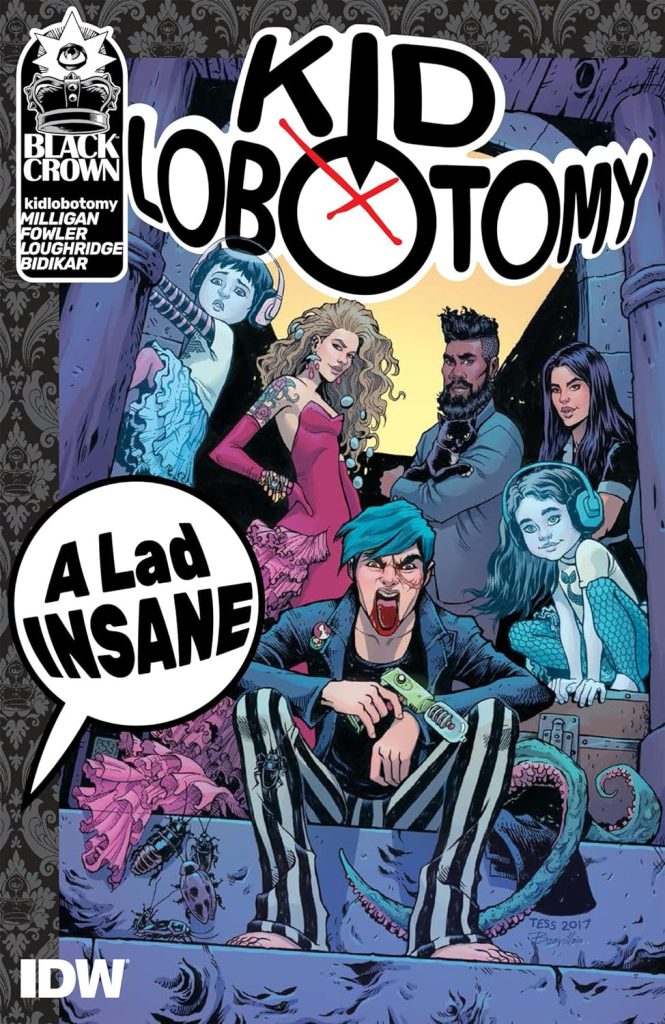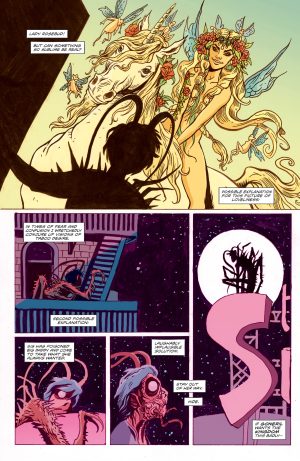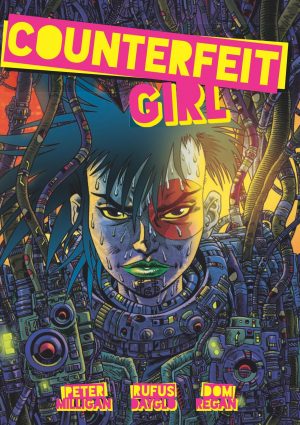Review by Diego Guerra
Like Jerry Cornelius from Michael Moorcock’s books, Kid Lobotomy is a well-off boy who is in love with his sister and has bisexual tendencies. Unlike Cornelius, Kid’s adventures are much more intimate. Kid doesn’t live grand adventures in uncertain worlds. Instead, he goes through a psychotic emotional crisis immersed in the family business: The Suites, a massive hotel that is part of the empire created by Big Daddy, Kid’s father, a despotic businessman who wants to leave Kid in charge of the place.
Kid can’t distinguish reality from his own fantasies. He’s a young man who abandoned a promising career with his rock band to play the harp and who lives in a world of hallucinations where readers won’t be clear what is real and what is part of Kid’s delusions. Big Daddy subjects him to a strange therapy that includes removing parts of his brain that don’t work well. After a while, it’s not that madness returns, it’s that due to the bizarre lobotomy perhaps his fantasies, perhaps the beings that emerged in his imagination, come to life in the real world.
Kid’s beautiful sister, Rosebud, tries to manipulate him, aiming to become the manager of the hotel. But perhaps Rosebud, despite herself, is not as cold and calculating as she seems. Gervais, Kid’s assistant and lover, will always maintain an ambiguous attitude towards his boss, without Kid himself remembering when he hired him, or The Suites’ other ominous employees. There’s Ottla, the illegal immigrant who is a chambermaid, Kid’s lover, and a shapeshifter. Her love for Kid will seem sincere, and her previous story with Big Daddy will be very sordid, or maybe not so much. There will be immense cockroaches in the hotel reminiscent of Kafka’s Metamorphosis. There will be ghost children wandering the halls, a manic writer who will only overcome creative blockage in a hotel suite, an elderly crossword specialist with homicidal tendencies, and an artistic resident who, unintentionally, in her paintings will expose Kid’s contradictions. The scenarios of The Suites have a solid symbolic charge. It will be impossible not to associate these labyrinthine passages, those monstrous insects, those strange characters, with Kid’s internal fears, revealing a traumatic and terrible childhood.
Veteran writer Peter Milligan constructs an original and unusual story in these times. The psychedelic elements of Kid Lobotomy perhaps correspond more to cinematic or literary fiction of the early 1970s. That, though, makes the ideas even more original in the second decade of the 21st century because Kid Lobotomy is nothing like contemporary comics.
This is much more bitter than it seems, adopting an ironic, cynical tone that shields a fundamentally very sad mood. On the other hand, Tess Fowler’s artwork is splendid. The characters have a subtle cartoonish, sophisticated, and decadent tone. The expressions are imbued with sensuality and sarcasm, becoming suitable for the story they tell.
Kid Lobotomy‘s only drawback is that, despite being very complex, full of details and contradictory characters, the ending is abrupt when there’s enough material to further develop the plot.
However, it’s a great graphic novel.





